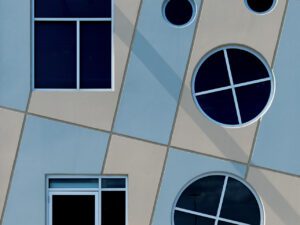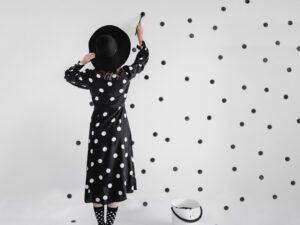What do we mean by the idea of “now”? Neuroscientists and psychologists believe that our experience of “the present” lasts between 2-3 seconds. Time is an unruly and slippery concept. Many of us will have experienced the phenomenon of minutes feeling like hours, or vice versa. Photographers have been grappling with these ideas for centuries. During the 1800s, for example, Eadweard Muybridge published The Horse in Motion, a pioneering study of movement. Later, in 1964, Harold Edgerton captured the now-famed shot of a bullet ripping through an apple: effectively freezing the moment of impact.
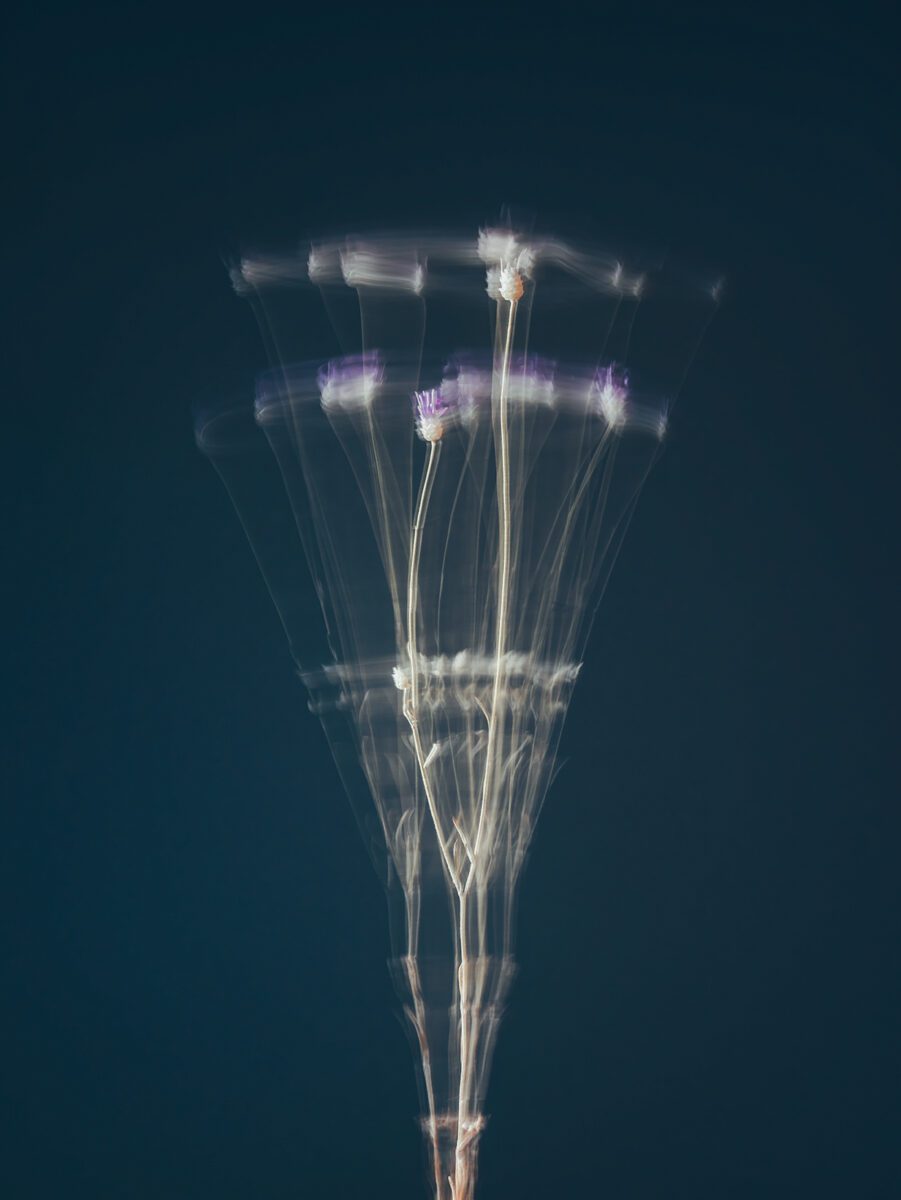
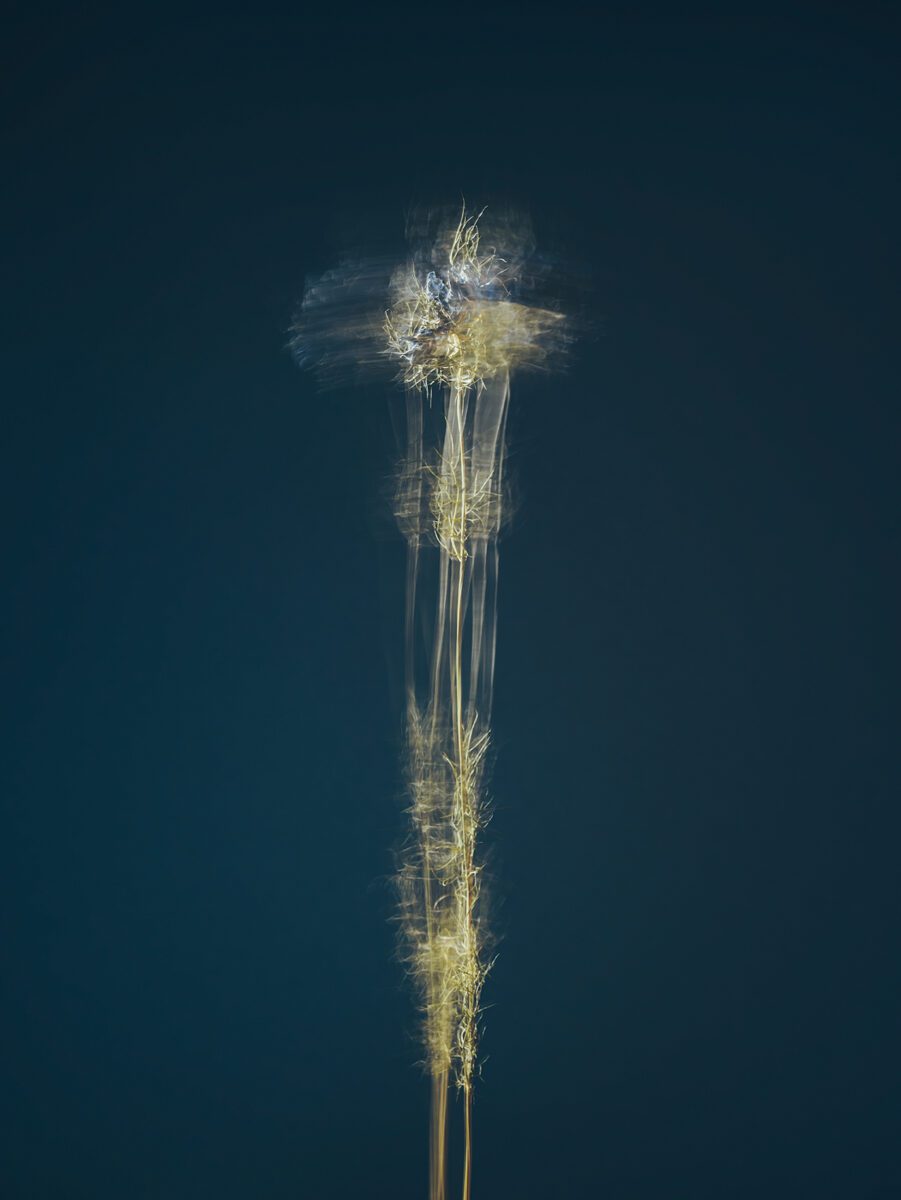
Now, contemporary artist Jan Prengel (b. 1992) continues this legacy with the series In Search of the Present. Each shot depicts a different plant stem reverberating against a navy blue backdrop. “For most people, the term “present” suggests the existence of a moment that is clearly separated from the past and future,” the artist notes. “But physically the “now” is just an illusion. Everything in the universe is in constant motion and the past, present and future are flowing into each other.”
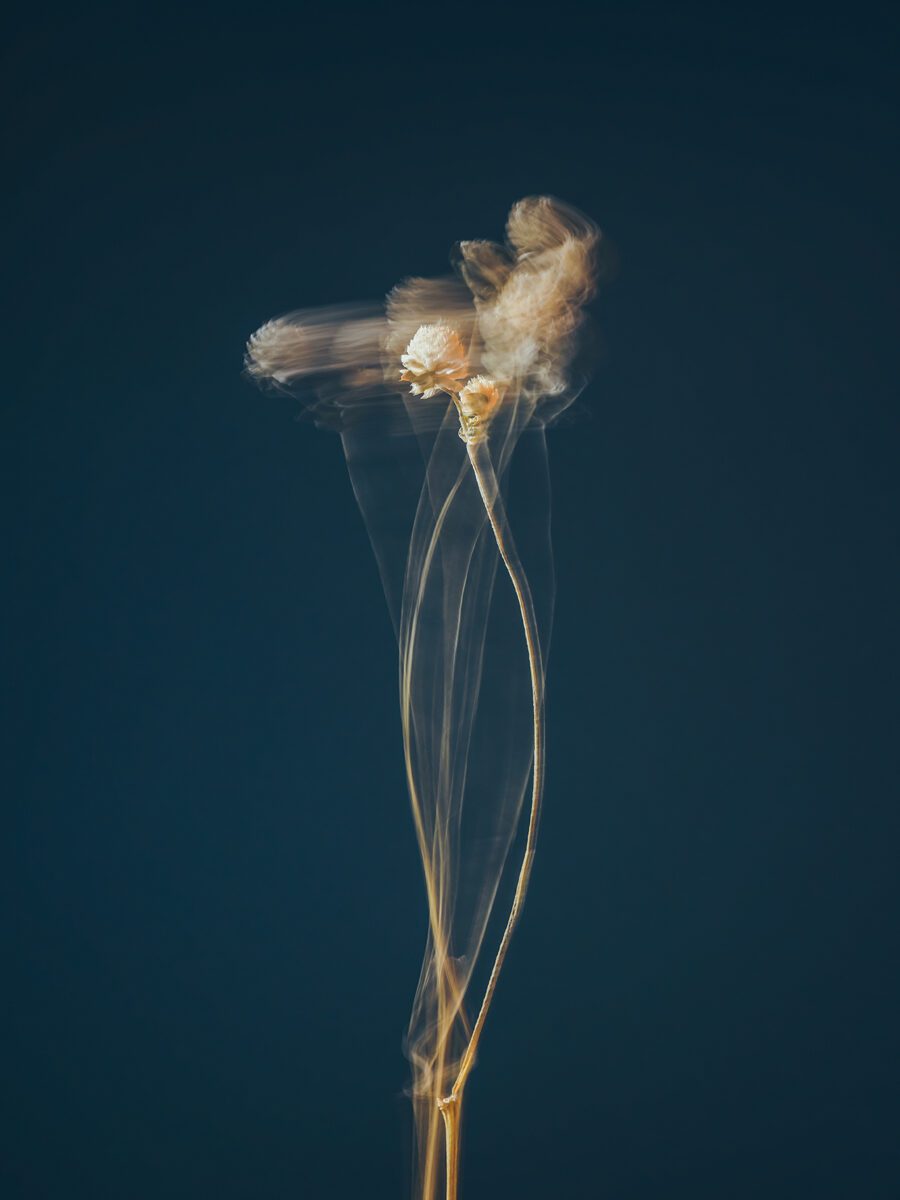
Flowers are traditionally associated with still life painting, a genre with a rich and complex history. From the 17th century Dutch Golden Age to modernist works by Georgia O’Keeffe, blooms have long been regarded as symbols of growth, celebration, even mortality. Here, however, Prengel photographs them in motion, over an exposure time of 2-3 seconds. The resulting pictures are blurred and dynamic, recording traces left behind as the subjects appear to dance in front of the lens. There’s something of Anna Atkins’ botanical cyanotypes here, too – a collection from the 1800s considered to be the world’s first photobook.


Prengel’s wider practice includes elegant architectural photographs and haunting still lifes. Amongst these is the Plants in Space series, which presents flora as if they were priceless museum exhibits: oddities or found relics from a bygone era. Shooting each stem against regal tones of ruby, emerald and navy, Prengel draws attention to the strange beauty of protruding stalks, trumpet-shaped petals and sharp thistles. The collection is another example of Prengel’s minimalist style – conveying the stark, silent beauty of nature.
Image Credits: In Search Of The Present 1-11, 2022 © Jan Prengel.




